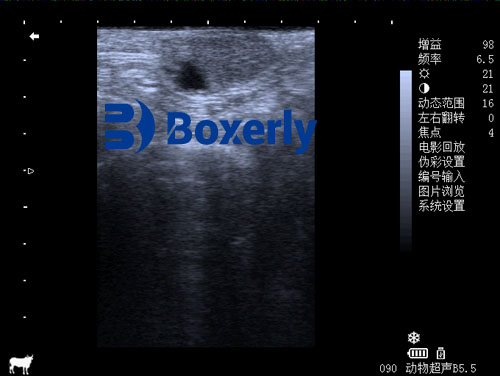Veterinary ultrasound has become an essential tool in modern livestock management. It allows farmers and veterinarians to visualize the internal structures of animals non-invasively, leading to earlier diagnosis, better treatment planning, and improved animal welfare. Especially in large animal farming, such as cattle, swine, and equine operations, early detection can significantly impact productivity and herd health.

Below are the top five conditions that can be detected early using veterinary ultrasound technology:
-
Reproductive Issues (Pregnancy Diagnosis and Fertility Monitoring)
One of the most common uses of ultrasound on farms is reproductive assessment. Ultrasound allows early pregnancy detection—often as early as 25–30 days post-breeding in cattle or swine. Early confirmation of pregnancy ensures optimal reproductive planning and reduces the days open, which saves costs and increases productivity.
Ultrasound can also be used to monitor ovarian activity and uterine health. Cysts, inactive ovaries, or uterine infections (such as endometritis) can be detected, allowing timely hormonal treatments or management decisions.
In animals like horses used for riding or racing, or working cattle dogs and draft oxen, musculoskeletal injuries are common. Veterinary ultrasound enables the visualization of soft tissue injuries such as tendon tears, ligament damage, and muscle inflammation.

Early detection of these conditions prevents further injury and supports more precise rehabilitation programs. For equine athletes, this can mean the difference between returning to performance or permanent retirement.
-
Respiratory Conditions
In livestock, especially young calves and piglets, respiratory infections can spread quickly and reduce weight gain or increase mortality. Thoracic ultrasound can identify lung consolidation, abscesses, or pleural effusion. While auscultation (listening with a stethoscope) can detect abnormal sounds, ultrasound provides a clear picture of internal pathology.
Veterinarians can use ultrasound to evaluate the severity and nature of respiratory disease and monitor the effectiveness of treatment over time.
-
Digestive Tract Disorders
Ultrasound can help diagnose gastrointestinal problems such as intestinal obstruction, displacement of the abomasum (especially in dairy cattle), or inflammation in the intestines. These conditions often present with vague symptoms like reduced appetite or bloating.
With ultrasound, veterinarians can localize the issue without the need for surgery. In ruminants, for example, left displaced abomasum (LDA) can be confirmed and corrected much earlier, preventing more serious complications.

-
Liver and Kidney Abnormalities
Liver abscesses, nephritis (kidney inflammation), or even congenital defects can be identified with ultrasound before clinical signs become obvious. These are particularly important in finishing cattle, where liver health directly affects carcass quality.
Ultrasound enables monitoring of organ size, shape, and echogenicity (how it reflects sound), offering insight into metabolic or systemic diseases. Regular scanning can help isolate animals at risk before the whole herd is affected.

Ultrasound’s value lies in its ability to diagnose issues before they become severe. While many companies provide ultrasound machines, some manufacturers focus specifically on large animal applications—like BXL, a company specializing in livestock ultrasound equipment.
Early detection means earlier intervention, less suffering for the animals, and higher economic returns for producers. For today’s livestock farmer, veterinary ultrasound is not just a diagnostic tool—it’s a daily necessity.